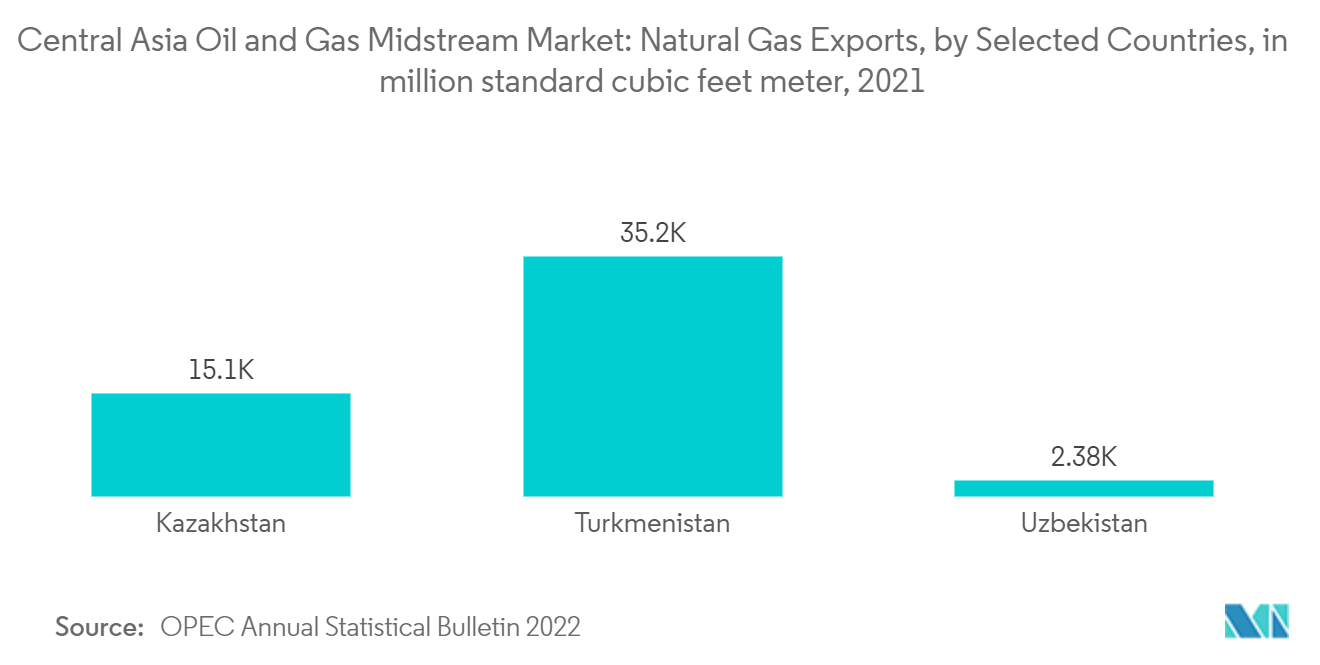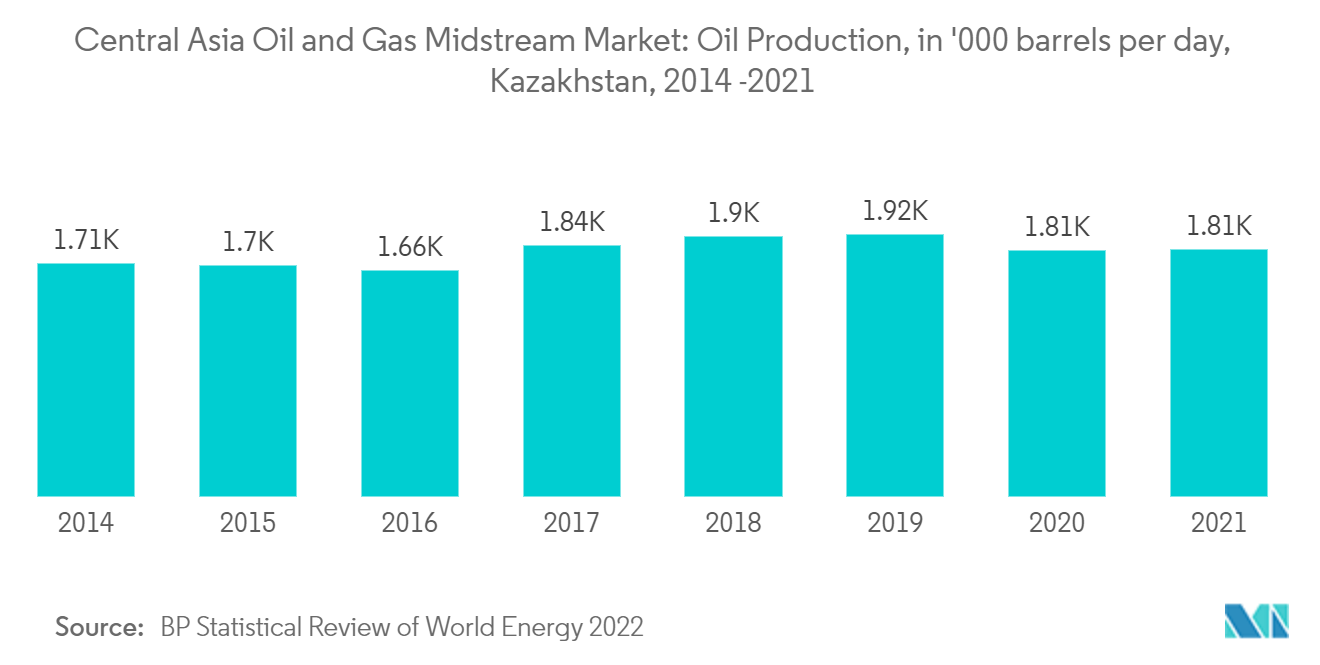Market Trends of Central Asia Oil and Gas Midstream Industry
This section covers the major market trends shaping the Central Asia Oil & Gas Midstream Market according to our research experts:
Transportation Sector to Dominate the Market
- Pipelines dominate the oil and gas transportation industry. Central Asia's oil and gas supply is expected to exceed the existing transportation capacity, requiring expansions and the construction of new pipelines.
- The continuous need for energy requires new oil and gas infrastructure. Thus, the rising energy demand has increased new pipeline constructions and transportation facilities globally. Increasing energy demand has increased new terminals and pipeline construction, including oil and gas pipelines and transportation. This is expected to drive the Central Asia oil and gas midstream market during the forecast period.
- In 2021, as per OPEC's annual statistical outlook, Central Asian counties witnessed significant growth in natural gas exports. Kazakhstan exported 15,101 million standard cubic feet meters (s cu m) of natural gas. Similarly, Turkmenistan exported 35,200 million standard cubic feet meters, and Uzbekistan exported 2,380 million standard cubic feet meters.
- In April 2021, Turkmenistan aimed to revive the critical gas pipeline to India. The Turkmenistan-Afghanistan-Pakistan-India Pipeline (TAPI) project aims to deliver up to 33 billion cubic meters of gas from Turkmenistan via Afghanistan and Pakistan to India. The project is significant for Turkmenistan oil and gas industry as it will open a new major export route to the fast-growing energy market.
- In September 2021, the State Oil Company of Azerbaijan SOCAR and the Swiss-Dutch company Vitol Group agreed to transport about 1 million tons of Turkmen oil annually. The oil is exported via the Baku-Tbilisi-Ceyhan oil trunk pipeline (abbreviated as BTC). SOCAR transports Turkmen oil across the Caspian Sea by tankers. The length of the BTC pipeline is 1,768 kilometers. The oil pipeline passes through the territory of three countries - Azerbaijan (443 km), Georgia (249 km), and Turkey (1076 km).
- Therefore, owing to the above points, transportation is expected to dominate the Central Asian and gas midstream market during the forecast period.

Kazakhstan to Dominate the Market
- The government-owned KazTransOil, a subsidiary of KazMunaiGas, operates Kazakhstan's pipeline system. Kazakhstan's natural gas and oil export infrastructure is still integrated with significant Caspian oil. Natural gas export routes interlink the region.
- The oil consumption increased in the country by 8.3% year on year, from 302 thousand barrels per day in 2020 to 327 thousand barrels per day in 2021. At the same time, oil production increased in the country, from 1806 thousand barrels per day in 2020 to 1811 thousand barrels per day in 2021.
- In 2021, Kazakh oil exports accounted for more than 1% of world supplies, roughly 1.4 million barrels per day (BPD).
- Major crude oil export pipelines in the region include the Caspian Pipeline Consortium (CPC) pipeline to the Black Sea port of Novorossiysk, the Kazakhstan-China pipeline, and the Uzen-Atyrau-Samara pipeline to Russia. CPC has a design capacity of around 1.4 million barrels per day.
- KazTransGas operates the largest network of main gas pipelines in Kazakhstan, stretching for more than 19,000 km with an annual throughput capacity of up to 160 bcm with gas distribution networks of more than 45,000 km.
- Kazakhstan's oil and gas pipeline industry is expected to grow slightly in the forecast period due to an increase in oil production in the country.


